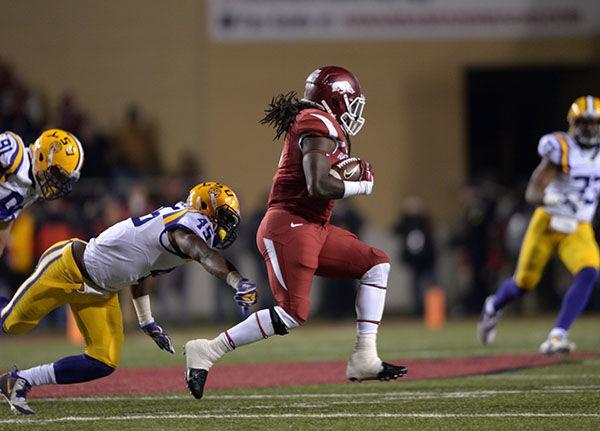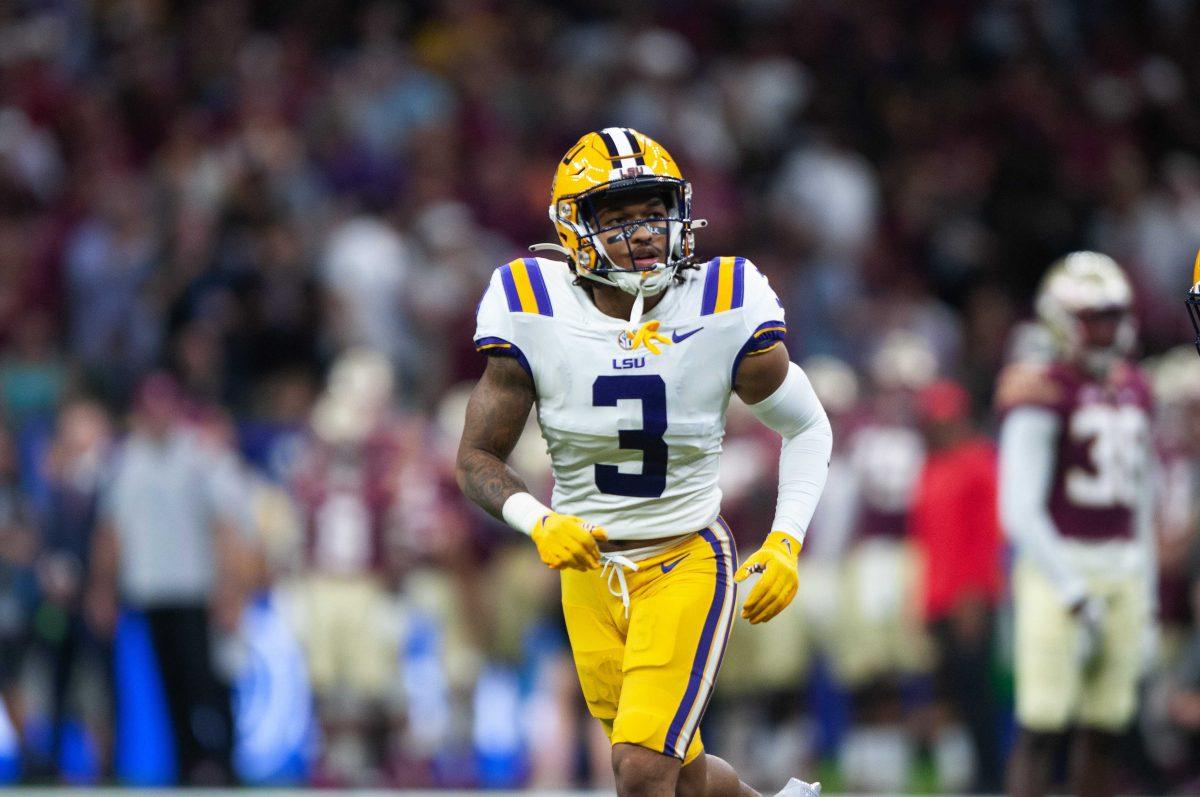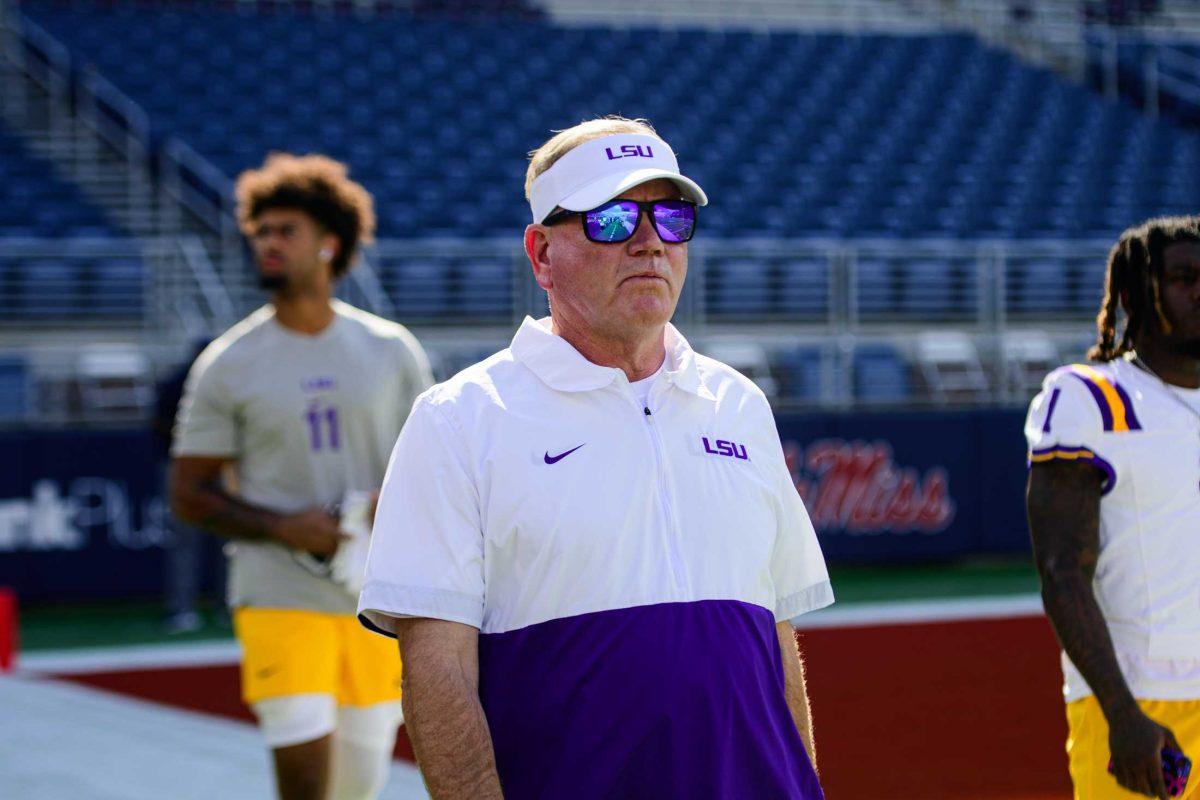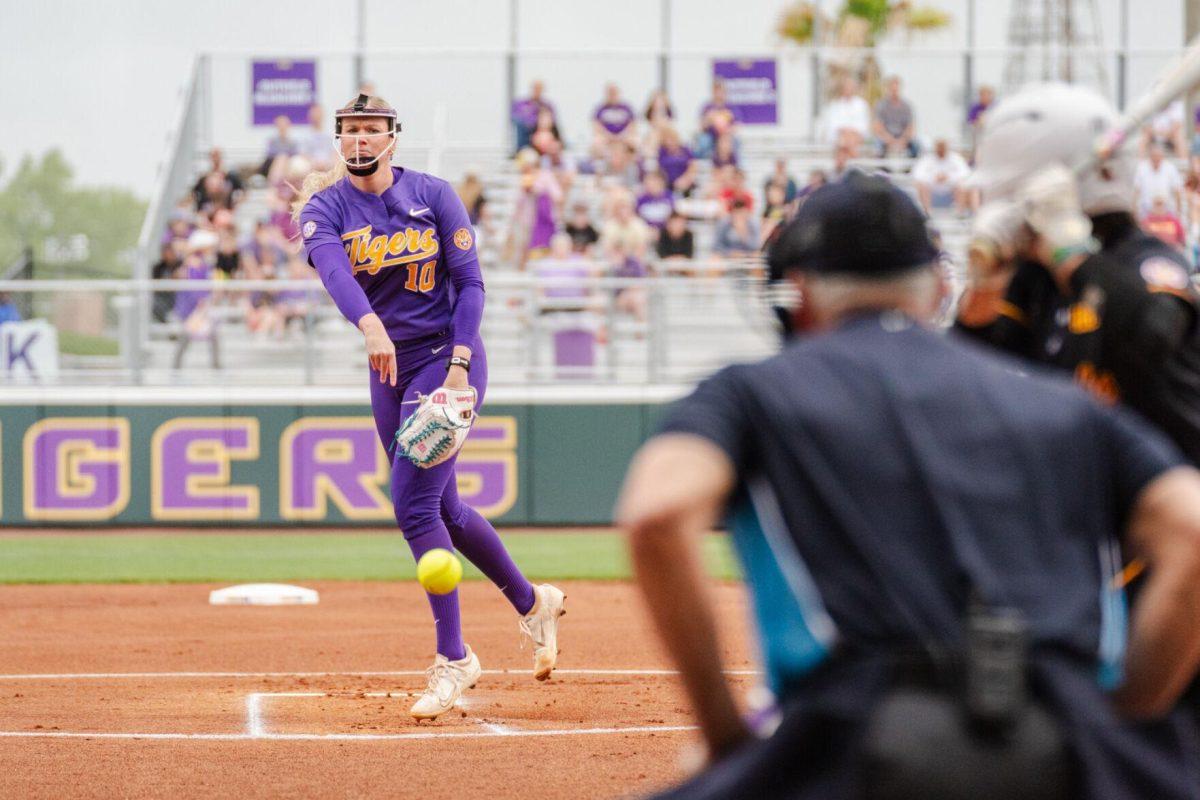The Alabama offense was on the field at Bryant-Denny Stadium for 39:27 on Saturday. That’s almost 19 minutes more than the LSU offense was on the field.
Even after LSU scored a fourth-quarter touchdown after a turnover in Crimson Tide territory, closing the gap to two scores, Alabama took over with 9:18 left and possessed the ball until the game was over.
Needless to say, the lack of offensive success, especially in the second half, didn’t do LSU’s defense any favors, which gave up 210 yards and three touchdowns to Tide junior running back Derrick Henry.
“At any point in time that you’re in a position like that, you’re going to be taken advantage of because of the time that you’re on the field,” said LSU coach Les Miles. “Offensively, we have to sustain drives, but when you’re 3-11 on third downs, that just didn’t happen.”
When a team runs 34 more offensive plays, including 19 more in the second half, it would be easy to believe the opposing defense would wear down.
The Tide converted on 7-of-15 third-down conversions and went three-and-out just once, excluding the turnover, which occurred on the second play of the drive, and a second quarter touchdown. Furthermore, Tiger opponents averaged 66 plays per game coming into Saturday’s matchup. The Tide ran 79.
But junior defensive end Tashawn Bower, who forced the Tide fumble in the final period, said he didn’t feel fatigued as the game dragged on against a physical Alabama offensive line.
“I don’t even think you notice,” Bower said. “You come out of halftime ready to play, 0-0. It’s a whole new half, a whole new game, so you don’t really notice as much. You’re still playing with full and maximum effort.”
Effort in Tuscaloosa, Alabama, against the second-ranked team in time of possession was required. But the road doesn’t get any easier as the Tigers welcome Arkansas, the top-ranked team in that category.
Not only do the Razorbacks hold onto the ball, but senior quarterback Brandon Allen directs an offense that has the highest conversion rate on third down and highest passing efficiency rate in the Southeastern Conference. The Arkansas offensive line, which has an average weight of 328 pounds among its starting five, also leads the league in sacks allowed with just nine.
With another talented running back like Razorback junior Alex Collins, the third-leading rusher in the conference, running behind it, there aren’t many weaknesses in the Razorback offense, said junior defensive tackle Christian LaCouture.
“In the SEC, especially the West, they’re all physical offensive lines,” LaCouture said. “I know some of them are spread and might be a little bit lighter. But for the most part, Alabama’s O-Line and Arkansas’ are pretty similar. Big, physical guys that are road graders.”
Junior linebacker Kendell Beckwith, however, felt Arkansas’ size on the line brings its own set of difficulties, but he embraces the challenge.
“I love [physical games],” Beckwith said. “I don’t mind them at all. I don’t mind one bit. It reminds me of the old-timey football—Real football.”
“As the competition level rises, you got to be more technique sound and just be ready to play.”
LSU front looking to rebound against another bruising Arkansas offense
November 10, 2015

Arkansas running back Alex Collins (3) escapes tackle in Razorbacks’ winning game 17-0 Saturday, Nov. 15, 2014 in Donald W. Reynolds Razorback Stadium.
More to Discover








